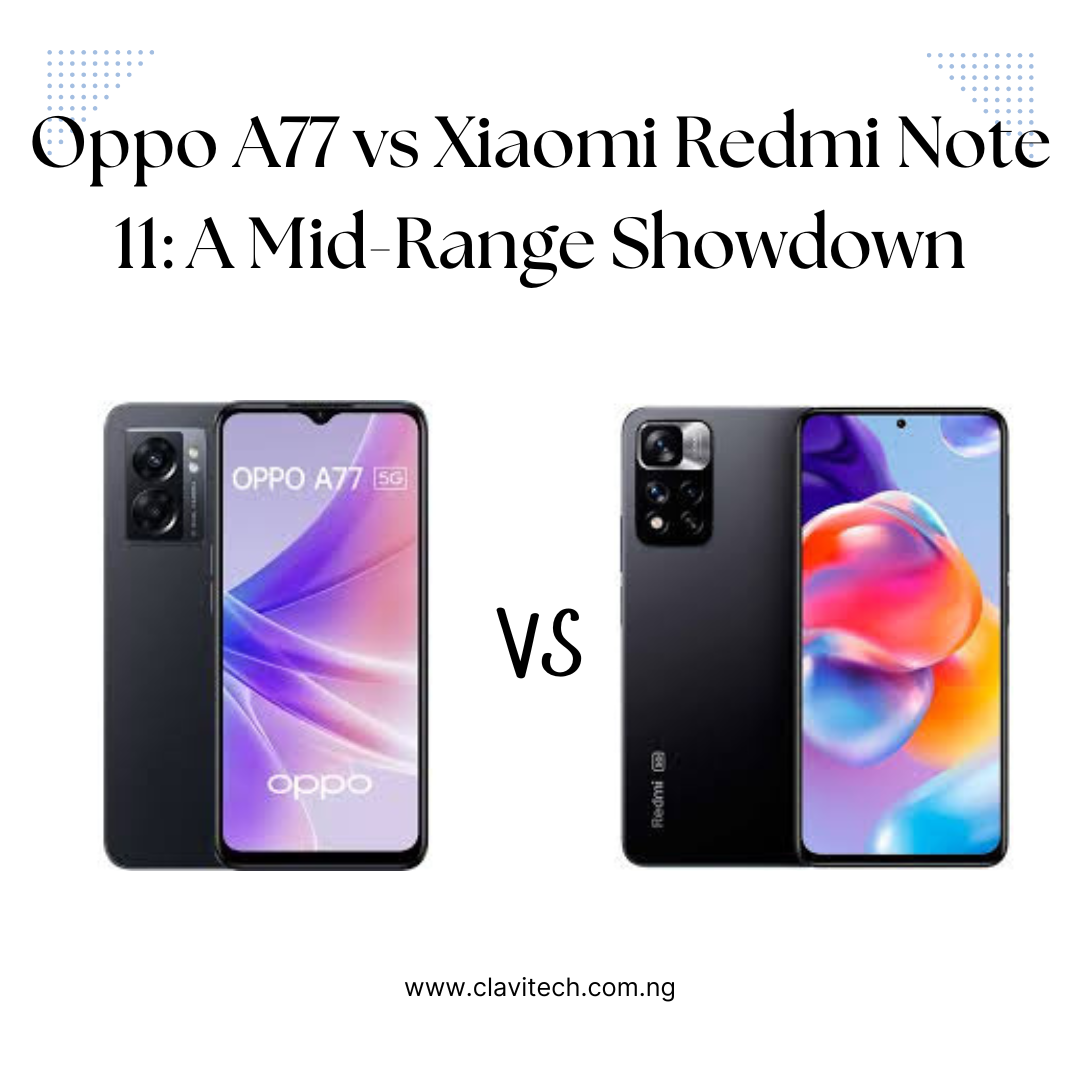In the competitive world of mid-range smartphones, Oppo and Xiaomi have been making waves with impressive offerings that blend style, performance, and affordability. Today, we compare the Oppo A77 and the Xiaomi Redmi Note 11—two devices that have garnered attention for their unique features. Let’s dive into how they stack up in terms of display, camera, battery life, performance, and overall user experience.
Design and Display
When it comes to aesthetics, both the Oppo A77 and Xiaomi Redmi Note 11 feature sleek designs that appeal to modern users. The Oppo A77 has a more minimalist look with a slim profile and vibrant color options, while the Redmi Note 11 incorporates Xiaomi’s signature, rounded edges and matte finish for a comfortable grip.
Oppo A77: Equipped with a 6.56-inch HD+ display, it offers decent color reproduction and clarity for casual media consumption. However, it lacks a higher refresh rate, which some users may notice.
Xiaomi Redmi Note 11: Sporting a 6.43-inch FHD+ AMOLED display with a 90Hz refresh rate, the Redmi Note 11 provides a smoother scrolling experience and sharper visuals, which is a definite plus for users who enjoy streaming videos or playing games.
Camera Comparison
Camera capabilities are crucial for many smartphone users, and both of these phones have solid setups:
Oppo A77: The A77 comes with a dual-camera setup, featuring a 50MP main sensor and a 2MP depth sensor. It performs well in daylight, capturing crisp and vibrant images, though low-light performance could be improved.
Xiaomi Redmi Note 11: The Note 11 boasts a quad-camera system with a 50MP main lens, 8MP ultra-wide lens, 2MP macro, and 2MP depth sensor. Its additional lenses make it more versatile, allowing users to capture a variety of shots with better detail and quality.
Performance and Software
Performance is where these phones begin to differ more significantly:
Oppo A77: Powered by the MediaTek Helio G35 processor, it’s suitable for light tasks like browsing, social media, and streaming. However, heavy gaming or multitasking may feel sluggish.
Xiaomi Redmi Note 11: Packed with a Qualcomm Snapdragon 680, the Redmi Note 11 offers a smoother experience with more powerful processing capabilities. It handles multitasking with ease and performs better with more demanding apps, making it ideal for users looking for a bit more power.
Battery and Charging
Battery life is a strong point for both devices, although the experience differs slightly:
Oppo A77: Equipped with a 5,000mAh battery, it supports 33W fast charging, allowing users to power up relatively quickly.
Xiaomi Redmi Note 11: Also featuring a 5,000mAh battery but with 33W fast charging, the Note 11 delivers a similar battery life experience. However, due to its AMOLED display and efficient Snapdragon processor, it may have a slight edge in battery optimization.
User Experience and Features
Each phone runs on its own Android-based OS:
Oppo A77: Running on ColorOS, the A77 provides a smooth, user-friendly experience, though it may not offer as many customization options as Xiaomi’s MIUI.
Xiaomi Redmi Note 11: Xiaomi’s MIUI 13 offers extensive customization and features that enhance user experience, such as theme options and gesture controls.
Final Verdict: Which One to Choose?
Both the Oppo A77 and Xiaomi Redmi Note 11 are fantastic mid-range options, each with unique strengths. If you prioritize display quality and performance, the Redmi Note 11 is a solid choice. However, if you prefer a minimalist design and can manage with slightly lower specs, the Oppo A77 won’t disappoint.
Looking for more insights on Oppo and Xiaomi devices? Subscribe for more reviews and comparisons to help you find the perfect phone!

